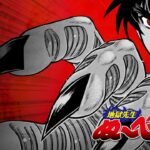The Gotei 13 in BLEACH—there’s such a mesmerizing blend of rich lore, dynamic relationships, and evolving team bonds. Because I wanted to organize all this information in one place, I decided to create a consolidated guide for anyone seeking a quick rundown of these legendary squads.
Spoiler Alert: This article reveals major plot points from “Textbook of Revenge.” If you want to avoid details, consider bookmarking this page and returning later.
What Is the Gotei 13?
The Gotei 13 is the main contingent of Soul Reapers (Shinigami) in BLEACH. Divided into thirteen separate squads, their overall assignments include:
- Protecting the Soul Society (in Japan, often referred to as 尸魂界).
- Purifying Hollows (malevolent spirits).
- Maintaining balance between worlds.
Each squad is led by a captain and supported by a vice captain, followed by other seated officers. Collectively, the Gotei 13 stands as the Soul Society’s first line of defense.
Gotei 13 at the Start of BLEACH
When BLEACH begins (around Volume 6–8 in the manga during the “Soul Society: The Sneak Entry arc”), we see many established faces:
• Captain-Commander Genryusai Shigekuni Yamamoto leading Squad 1, giving orders during the Ryoka (intruder) crisis.
• Iconic characters like Byakuya Kuchiki (Squad 6) and Toshiro Hitsugaya (Squad 10) at the center of major conflicts.
• Fiercely loyal members of Squad 11, epitomized by Zaraki Kenpachi, who live for battle.
The Original Gotei 13—What Happened?
Early in BLEACH’s “Thousand-Year Blood War” arc (Volumes 55–74), we learn about the savage, no-holds-barred origins of the first Gotei 13. Known for its brutally efficient captains, these initial squads are said to be the deadliest iteration in Soul Society’s history.
• Unohana Retsu (originally known as Yachiru Unohana, Volume 59–60) was the first Kenpachi and initial captain of Squad 11.
• Yamamoto, the founder, was so unstoppable that no Shinigami could surpass him for a thousand years.
Eventually, more structured leadership softened the Gotei 13’s edges, focusing on order rather than pure carnage. By the start of BLEACH, they are far more disciplined—though each squad retains distinct traditions.
Which Gotei 13 Is the Strongest?
Fans often debate which era or set of captains is technically the “strongest.” Some highlights include:
- The Original Gotei 13 as the most ruthless incarnation, with captains who didn’t hesitate to exterminate enemies.
- The “Final Arc” Gotei 13 (Volumes 55–74), featuring highly trained veterans and awakened powers (like Zaraki discovering his Bankai), arguably delivering the greatest raw potential.
Either way, power depends on synergy among captains, vice captains, and how quickly they adapt to crises—like the Wandenreich invasion in the Thousand-Year Blood War arc.
The “Strongest Gotei 13” Debate
Fans frequently discuss power rankings among squads and captains. Some notables:
- Byakuya vs. Kenpachi for raw battle intensity.
- Histories behind squads like Unohana’s dark past (Volume 59) shed light on hidden powers.
- Toshiro’s late-series Bankai enhancements push him into top-tier status near the final volumes.
But Tite Kubo (BLEACH’s creator) deliberately keeps certain battles open-ended, ensuring no definitive “top squad” emerges beyond storyline needs.
Youngest Captain & Other FAQs
• Youngest-ever captain is Toshiro Hitsugaya (Volume 18 clarifies him as a prodigy).
• The initial Gotei 13 is briefly teased during the Thousand-Year Blood War (Volumes 59–62).
• Certain squads (e.g., Squad 4) handle medical duties, so not all squads revolve around aggressive combat.
Meet the Captains and Vice Captains
Below is a concise rundown of key squads from across the series (references hint at volumes within the manga):
Squad 1: The Commanding Force
- Notable Captain: Genryusai Shigekuni Yamamoto (Volumes 14–55), later succeeded by Shunsui Kyoraku (Volume 60+).
- Distinguishing Trait: Houses the Captain-Commander who oversees the entire Gotei 13.
- Zanpakuto Example: Yamamoto’s Ryujin Jakka, the most powerful fire-type sword in Soul Society.
- Key Moments:
- Volume 20: Yamamoto orders the hunt for Ichigo and his allies.
- Thousand-Year Blood War arc (Volumes 55–60+): Major confrontation with an invading Quincy force and a leadership transition.
Squad 2: Stealth and Assassination
- Notable Captain: Soi Fon (Volumes 14 onward).
- Known For: Stealth Ops (Onmitsukido). Specialized in covert missions and silent takedowns.
- Zanpakuto Example: Soi Fon’s Suzumebachi, dealing lethal strikes with two hits to the same spot.
- Key Moments:
- Volume 20–21: Soi Fon’s shock upon Yoruichi’s return.
- Emphasis on hidden techniques and infiltration in the Rescue arc.
Squad 3: Shifting Leadership
- Notable Captains:
- Gin Ichimaru (Volumes 14–20) with his crafty Shinso.
- Rojuro “Rose” Otoribashi (110 years prior and post-war return).
- Defining Attribute: Known for unusual or dramatic leadership changes.
- Key Moments:
- Volume 20: Gin’s betrayal with Aizen.
- Rose’s return in the “Thousand-Year Blood War” (Volume 55+).
Squad 4: The Healers
- Notable Captain: Retsu Unohana (Volumes 14–58), later revealed as the first Kenpachi.
- Role: Medical and supply expert squad, often underestimated by the more combat-oriented teams.
- Key Moments:
- “Soul Society Rescue Arc” (Volumes 14–20): Provides vital medical backup.
- “Thousand-Year Blood War” (Volumes 59–60): Unohana’s hidden history shocks both readers and Squad 11.
Squad 5: Infamous Intrigue
- Notable Captains:
- Sosuke Aizen (Volumes 14–20), the series’ primary antagonist.
- Shinji Hirako (former captain pre-100 years and reappointed afterwards).
- Traits: Calm atmosphere but overshadowed by Aizen’s machinations.
- Key Moments:
- Volume 20: Aizen’s betrayal.
- “Turn Back the Pendulum” flashbacks (Volume 36–37) revealing Shinji’s connection to the Vizards.
Squad 6: Noble Duty
- Notable Captain: Byakuya Kuchiki (Volumes 6+).
- Identity: Famed for noble composure and precise adherence to rules—embodies Soul Society tradition.
- Zanpakuto: Senbonzakura, with thousands of cherry blossom-like blades.
- Key Moments:
- Volume 16–17: Byakuya’s duel with Ichigo over Rukia’s fate.
- Continuous moral growth leading into final arcs (Volume 55 onward).
Squad 7: Courage and Honor
- Notable Captains:
- Sajin Komamura (Volumes 14–60s), a humanized wolf dedicated to repay Yamamoto’s kindness.
- Post-war leadership by Tetsuzaemon Iba.
- Emphasis: Deep loyalty, bravery, and a code of justice.
- Key Moments:
- Volume 20: Komamura’s fight against Aizen.
- “Thousand-Year Blood War”: Komamura’s drastic power-up and consequences (Volume 57–58).
Squad 8: Leisure Meets Leadership
- Notable Captains:
- Shunsui Kyoraku (Volumes 14–55) before taking over Squad 1.
- Lisa Yadomaru returning as captain post-war.
- Hallmark: An easygoing environment—Captain Kyoraku’s style, ironically, belies tremendous power.
- Key Points:
- Volume 20: Kyoraku’s rebellion against Yamamoto’s harsh orders.
- Volume 63+: Squad 8 adapts after Kyoraku is promoted.
Squad 9: Justice and Publication
- Notable Captains:
- Kaname Tosen (Volumes 14–20), blind yet morally complex.
- Kensei Muguruma (post-war return, Volumes 49+).
- Distinct Traits: Oversees the “Seireitei Communication” journal; tries to uphold peace (until Tosen’s betrayal).
- Key Moments:
- Volume 20: Tosen’s defection with Aizen.
- Kensei’s leadership reestablished in final arcs.
Squad 10: Young Genius
- Notable Captain: Toshiro Hitsugaya, the youngest ever promoted.
- Vice Captain: Rangiku Matsumoto, known for her laid-back attitude.
- Traits: Balanced approach to combat, with powerful ice-based abilities from Hitsugaya’s Hyorinmaru.
- Key Moments:
- Volume 18–20: Hitsugaya suspects foul play involving Aizen’s “death.”
- Volume 55–60: Hitsugaya’s Bankai evolves significantly during the invasion.
Squad 11: The Frontline Warriors
- Notable Captain: Kenpachi Zaraki, a battle-crazed fighter lacking formal Zanpakuto releases—until much later.
- Vice Captains: Yachiru Kusajishi (secretly connected to Kenpachi’s Zanpakuto), then Ikkaku Madarame in a replacement role.
- Traits: Fiercest combat unit, spurning kido or illusions.
- Key Moments:
- Volume 15–16: Kenpachi’s Brawl with Ichigo.
- Volume 59–60: Kenpachi’s shocking training with Unohana.
Squad 12: Research and Innovation
- Notable Captains:
- Kisuke Urahara (former).
- Mayuri Kurotsuchi (current).
- Key Focus: Tech development—ethical boundaries often pushed to extremes.
- Key Moments:
- Volume 14–15: Mayuri’s destructive showdown with Ishida.
- Countless arcs featuring Mayuri’s bizarre scientific solutions.
Squad 13: Hope and Compassion
- Notable Captains:
- Jushiro Ukitake (Volumes 14–74), beloved but frail.
- Rukia Kuchiki (final arc), eventually promoted to captain.
- Traits: Gentle leadership, reflecting Ukitake’s empathy—contrasted by hidden complexities.
- Key Moments:
- Volume 16–17: Ukitake helps sabotage the execution stand with Kyoraku.
- Volume 68–70: Rukia’s ascension to Bankai and beyond.
FINAL THOUGHT
I’ve always loved how each squad in the Gotei 13 feels like its own little world—Soi Fon’s austere approach in Squad 2 contrasts starkly with Squad 11’s thirst for battle and Squad 4’s medical dedication. Compiling all this information was a blast because BLEACH’s immense cast is part of what makes it so memorable for me personally (particularly the growth arcs of characters like Toshiro, Renji, and even the quietly influential Rukia).
From the militaristic Squad 1 down to the heartfelt Squad 13, the Gotei 13 shapes nearly every major conflict and drama in BLEACH. Whether you’re drawn to cunning strategists like Aizen (ex-Squad 5) or fierce warriors like Zaraki Kenpachi (Squad 11), there’s a rich tapestry of stories behind each uniform.







